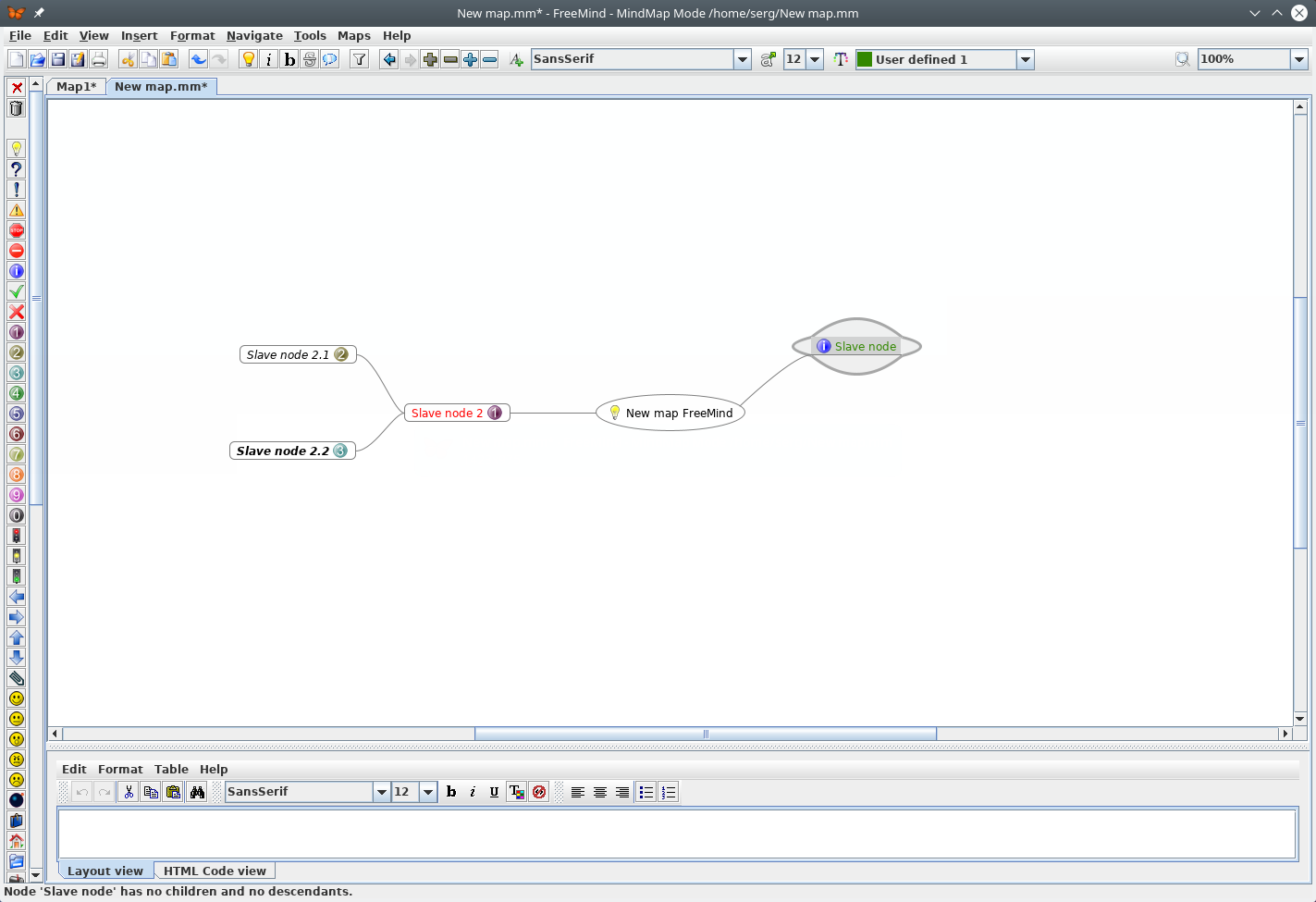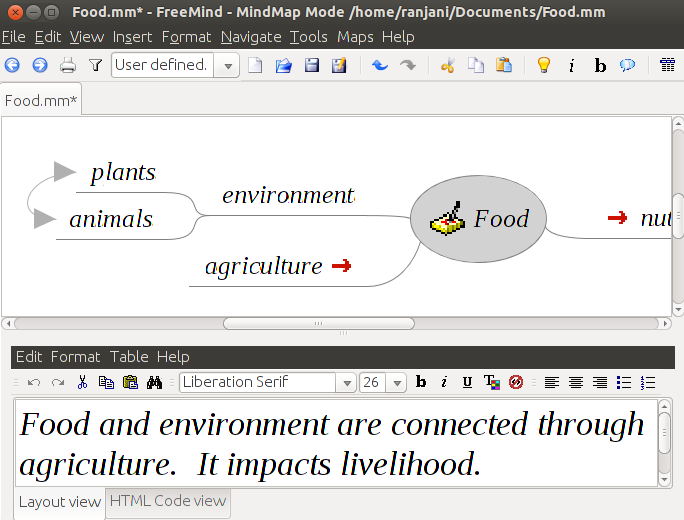

and work as expected and and as well, except you will want to notice that when moving nodes away from the root, it will select the sibling above itself as its new parent.Īfter having rearranged the nodes like this you can move the metaphor node's children up to the terminology node and then delete the metaphor node.
#Using freemind windows#
You navigate which node is selected by the arrow keys, and then hold (on a mac, probably on windows or linux) while using the arrow keys to move the selected node in the tree. This can also be achieved with the keyboard if you want. So you drag them one at a time to the corresponding metaphor (or holding shift you can mark several and drag them all together). This is not optimally organised, you would rather have the nodes attached to their respective metaphor. After having listened to him talk about this you get this map: and then he groups them into three different metaphor systems, deriving from: trees, family relationships and geometry. The lecturer starts by explaining the terminology used: node, root, parent, child etc. Suppose we are attending a lecture on using FreeMind. When the lecture is over you can spend a little time to format and restructure the notes into a powerful memory aid. That means you can focus on contents and let the structure be apparent automatically. Using FreeMind to take notes Īfter having learned the basic functionality you can now use FreeMind to take notes during a lecture. That means you can use to get line breaks in the text.

When you are satisfied you press + again. To format the text of a node you press + to get a rich text editor to pop up. From the right-click pop-up–list you can also change the node background colour and its edge colour (+e). To change a node's colour, you can either right-click it and choose Format→ Node Colour. This behaviour can be changed in the preferences though. When you change the style of a node, all its descendants change as well (unless previously given an explicit style). To change a node's style you have to right-click the node and choose Format and then either Fork (default) or Bubble (gives the node an outline). To remove an icon you press the red x in the icon list, and to remove all added icons you press the rubbish bin in that same list. To add an icon to a node, you either just click one of the icons in the leftmost icon-list or you press +c to get an icon palette that you can navigate with the arrow keys or select from with the mouse. To change the appearance of nodes you can add icons, change their style and their colour and you can format their text if you like. (If this annoys you as much as it annoys me, you change this setting in the preferences: under Behaviour you change selection method from delay to by click.) You can also select a key by placing the mouse cursor on top of it. To navigate between nodes use the arrow keys. To create a sibling node of the currently selected node, press.

When a node is selected its background is grey, and you can rename it by pressing F2 or just start typing. To add a new node you press or and type its name. When you have typed a new name you press to confirm or to cancel. These are all common terms used to talk about tree-like structures in science.Ĭlicking the root node will let you rename it.

A child of a node's parent is called a sibling. Nodes you add to another node are called its children and the node having children added to it is called their parent. An end node is called a leaf and a node with other nodes attached to it is called a branch. It is the node from which all other nodes stem. The grey elliptical blob with "New Mindmap" on it is called the root node. When the installation is done and you have started the program you are presented with the main view, containing an empty mind map.
#Using freemind install#
To install FreeMind on your system you point your browser to their Download page, which currently will tell you that the latest version is 0.8.1*, and there you will find detailed installation instructions. Where-ever I write, I believe you can substitute it for the key if you are running Linux or Windows. I am on an Apple MacBook which means I have a key. Please note that keyboard shortcuts differ on different platforms.


 0 kommentar(er)
0 kommentar(er)
